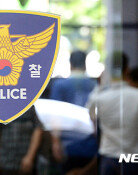Second wave of COVID-19 may strike S. Korea
Second wave of COVID-19 may strike S. Korea
Posted August. 18, 2020 07:27,
Updated August. 18, 2020 07:27
As mass infections occurred in churches in Seoul and the nearby region, the number of new COVID-19 patients in South Korea recorded 197 on Sunday, marking the fourth day in a row with a three-digit figure. The number of patients from Sarang Jeil Church in Seoul has reached 317 as of Sunday, surpassing the previous highest record of a domestic mass infection from a club in Itaewon, Seoul with 210 cases. Yoido Full Gospel Church – the biggest church in the country – has also produced multiple cases. Now, the cooperation of churches and their members with the epidemiological investigation of the disease control authorities is required to prevent the virus from spreading across the entire country.
The recent mass infections in Seoul and the nearby region are the second crisis faced by the country, following the first wave in Daegu and North Gyeongsang Province in February and March. This time, the virus is spreading at a faster speed while the details of infections and response capabilities point to a more precarious situation. During the first wave, conducting epidemiological surveys was easier as most cases came from a single group called Shincheonji Church of Jesus and the fatality rate was low as it was mostly young people who were infected. This time, however, multiple people are infected in various spaces, such as a church, office, or café, with 40 percent of all patients aged over 50. Meanwhile, over half of 339 beds for intensive care in Seoul and the nearby region are already filled with the possibility of more patients affected by heatwave to follow after a long rainy season.
The country already faced serious issues during the first wave due to the lack of an efficient distribution system of medical resources based on patients’ severity with more than half of patients in a serious condition were not admitted to intensive care units as they were filled by those in a less critical condition. It is even more frustrating to see the government’s complacent failure of not addressing the bed shortage issue while the second wave has been predicted for a long time.
It is also hard to expect medical professionals’ continued commitment. Three out of 10 doctors have expressed a sign of burnout due to the prolonged COVID-19 infections. After successfully handling the first wave, the government increased the number of vice-ministers of the Ministry of Health and Welfare of South Korea and raised the status of the Korea Centers for Disease Control and Prevention, but looked away from the front-line labor shortage issue at public health centers and the financial difficulties experienced by hospitals due to COVID-19 responses. On top of this, the government announced a policy to increase the number of medical school students without discussions with the medical community, causing resistance from doctors.
The government should reorganize the existing systems to provide enough front-line workers for disease control and prevention and enable the efficient mobilization of sickbeds and medical professionals. A situation in which a patient dies without a chance to see a doctor at all should be prevented by transferring mild cases to community treatment centers while securing beds for intensive care as much as possible. In addition, emergency rooms should be clearly separated from other facilities to prevent the reoccurrence of the case of a high school student in Gyeongsan where proper treatment was not provided to him in an emergency situation due to a large number of COVID-19 patients.
Meanwhile, residents of university hospitals will go on an unlimited strike from Friday in opposition to the government’s plans surrounding the number of medical school students and the payment of oriental medicines. The Korea Medical Association also announced the second general strike for three days from August 26. The government should admit its fault of one-way execution of medical policies and be sincere to listen to the voices of the medical community. Medical professionals should also refrain from taking organized actions and stand by patients in the face of the second wave crisis.







